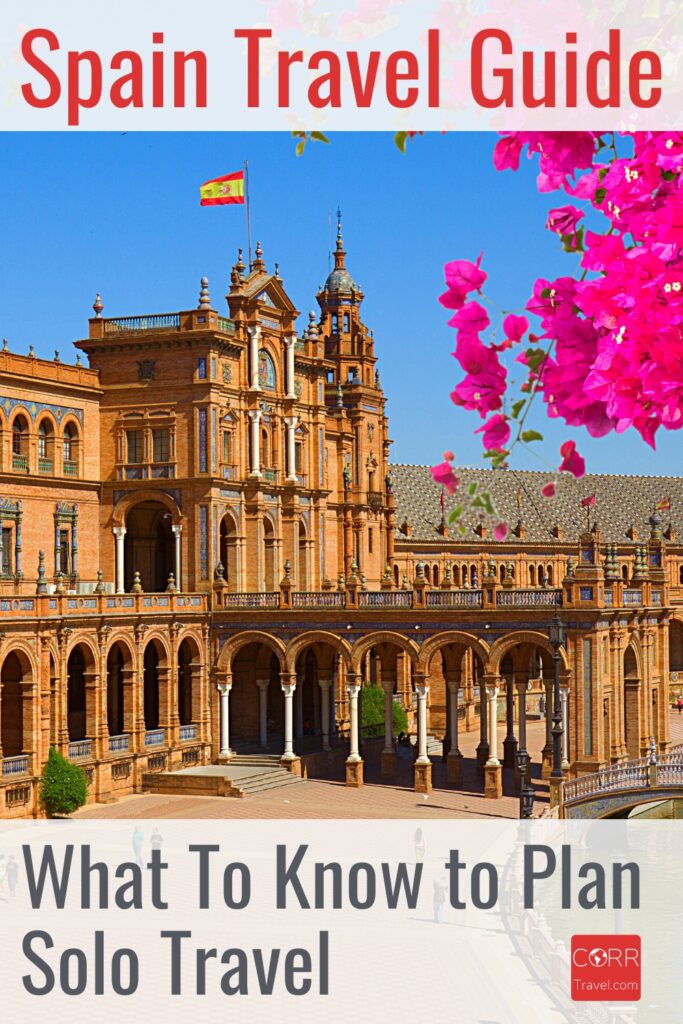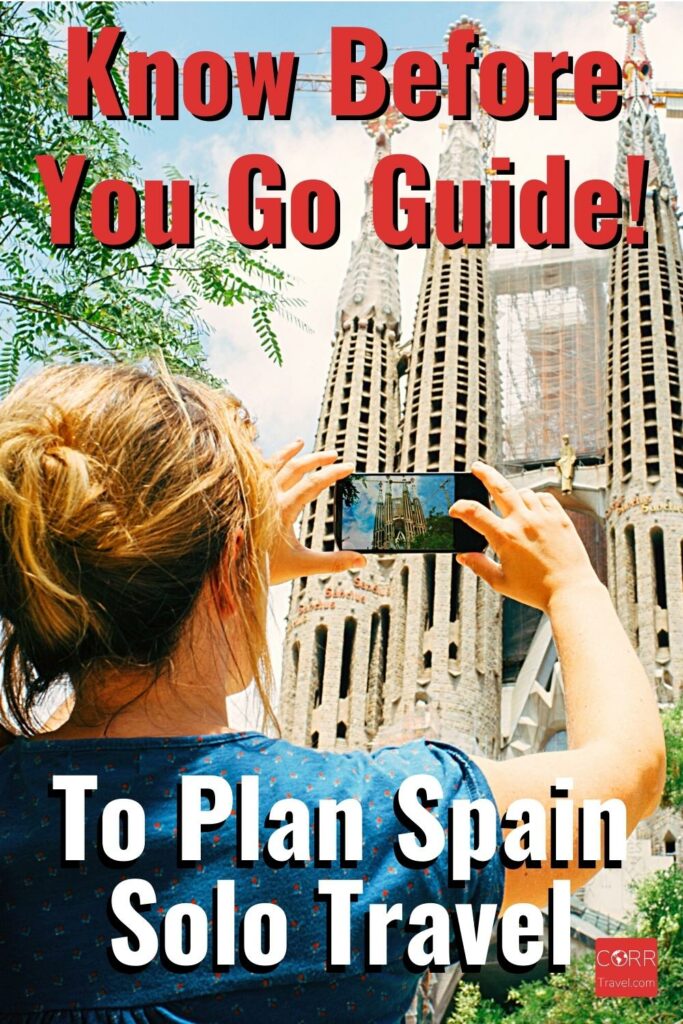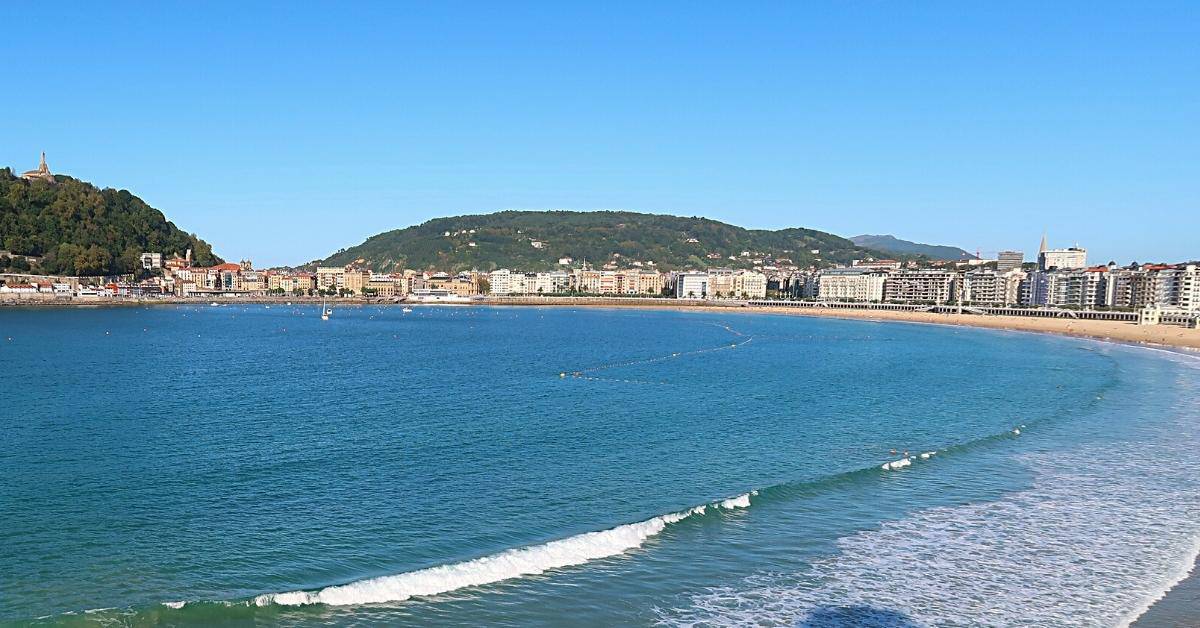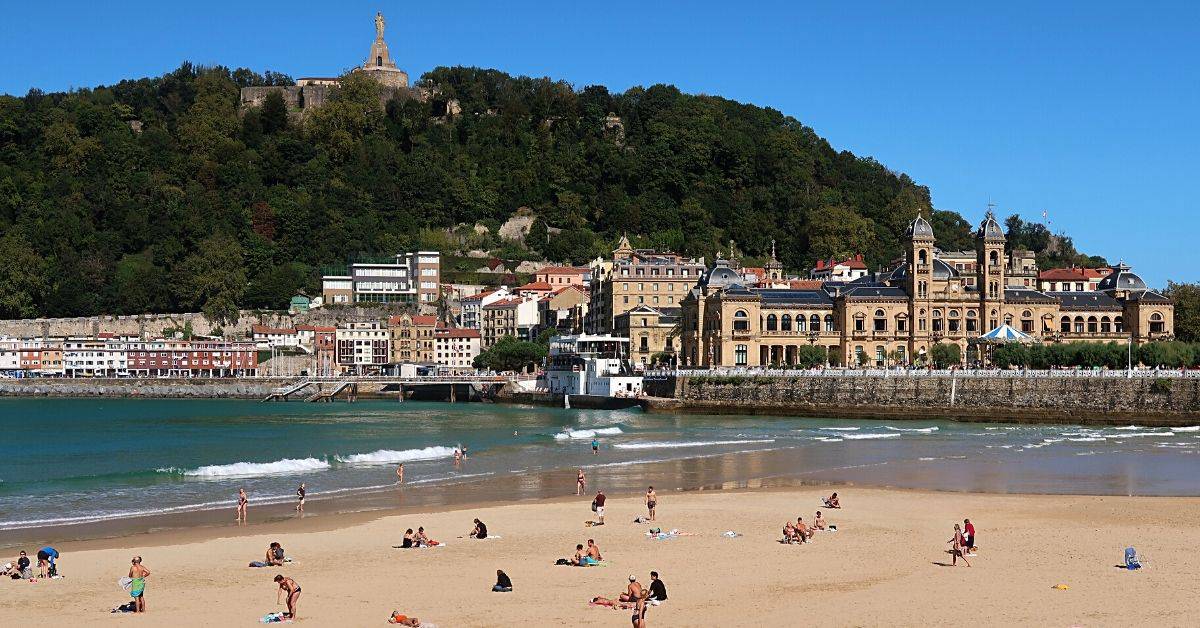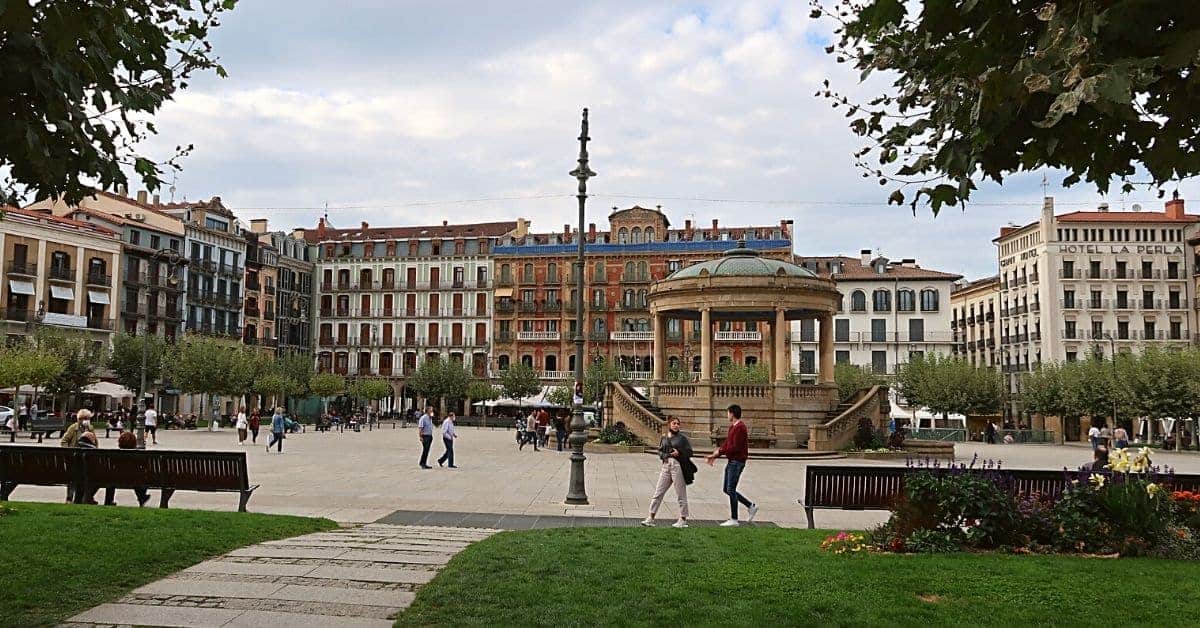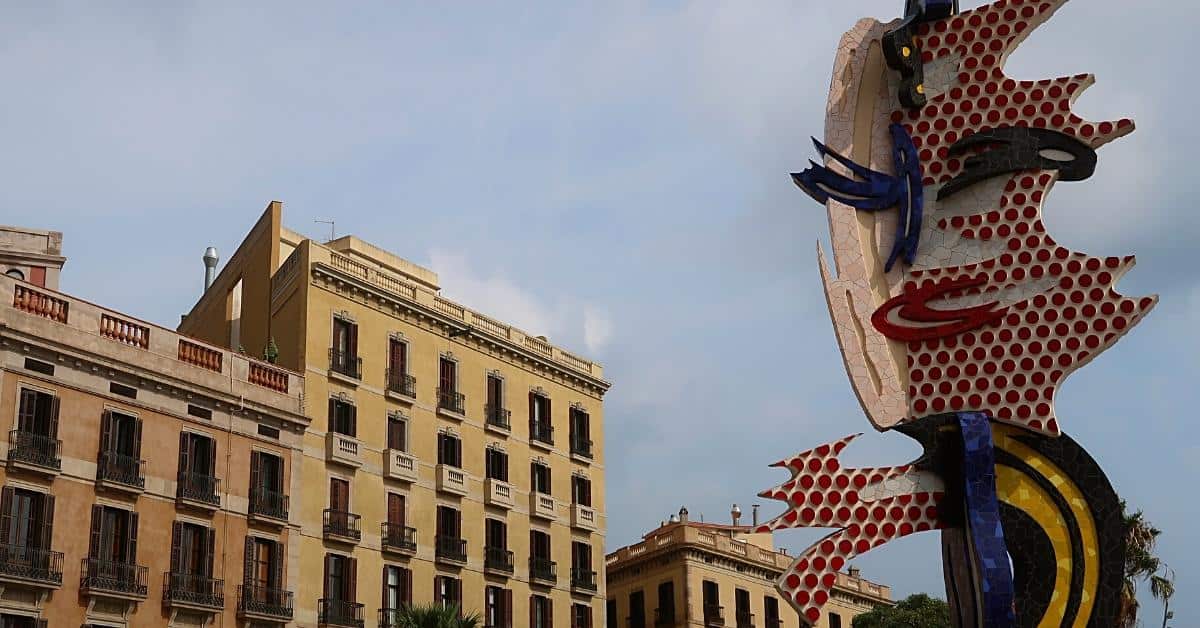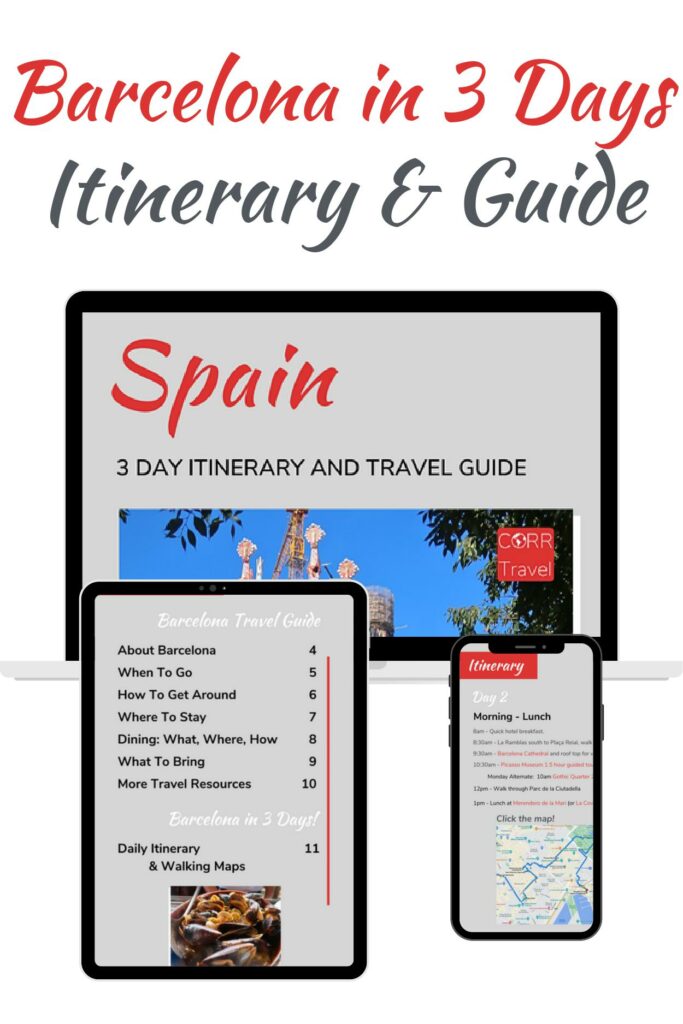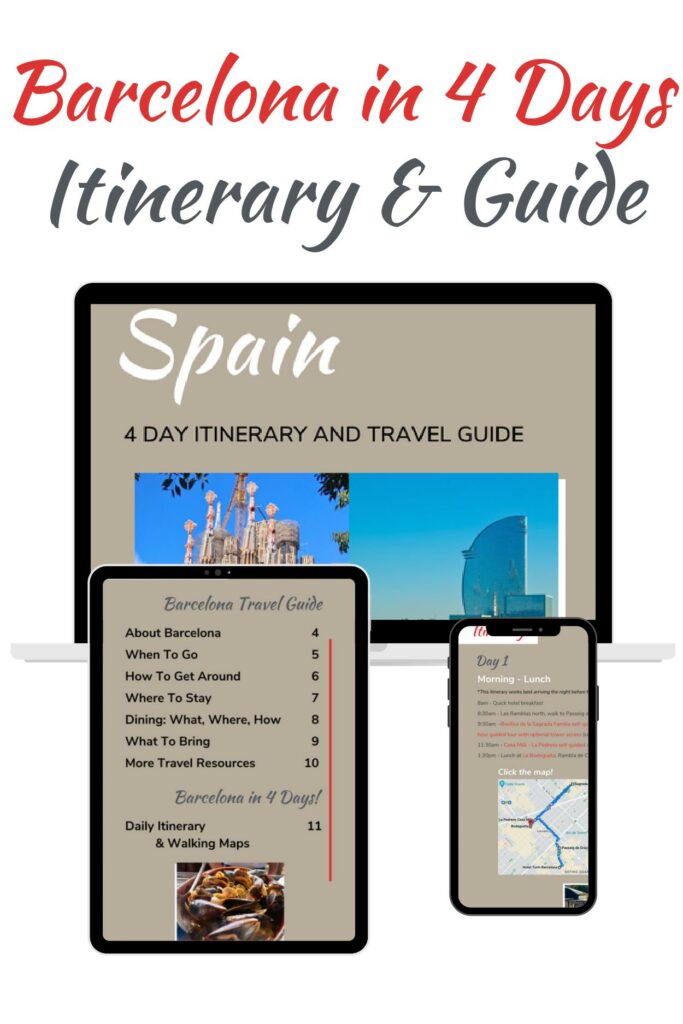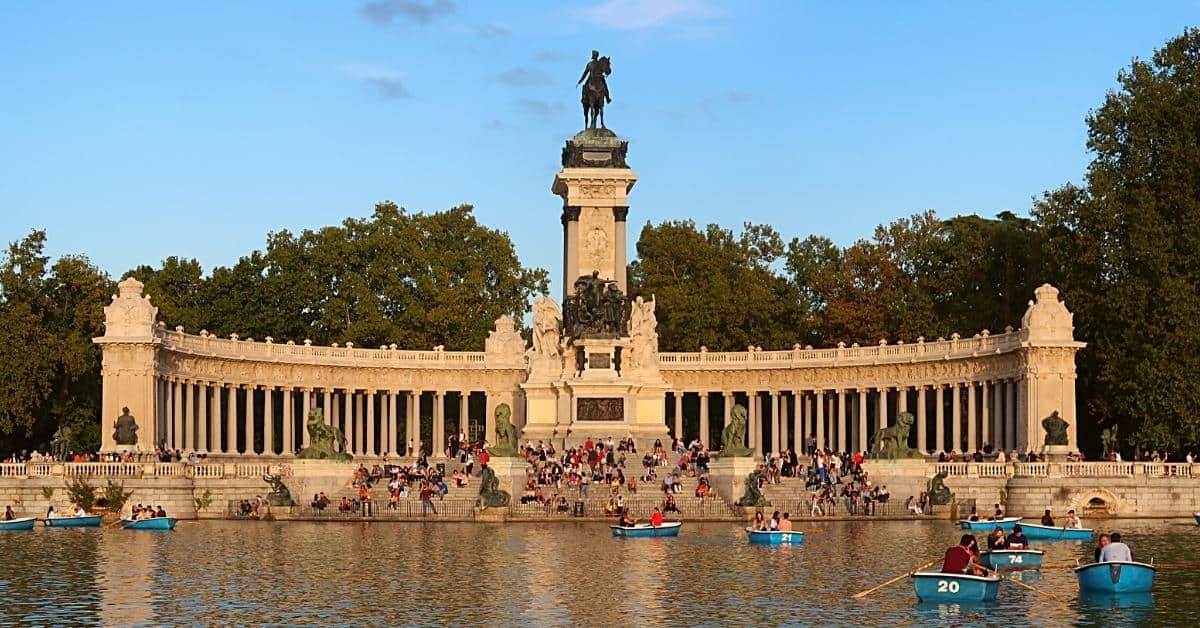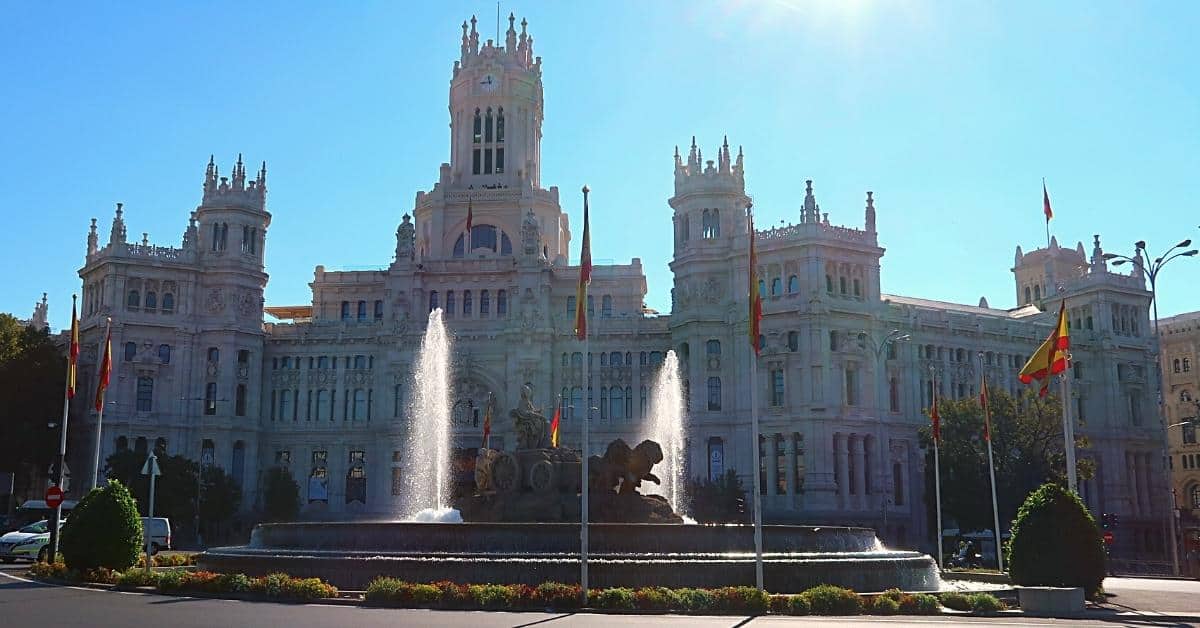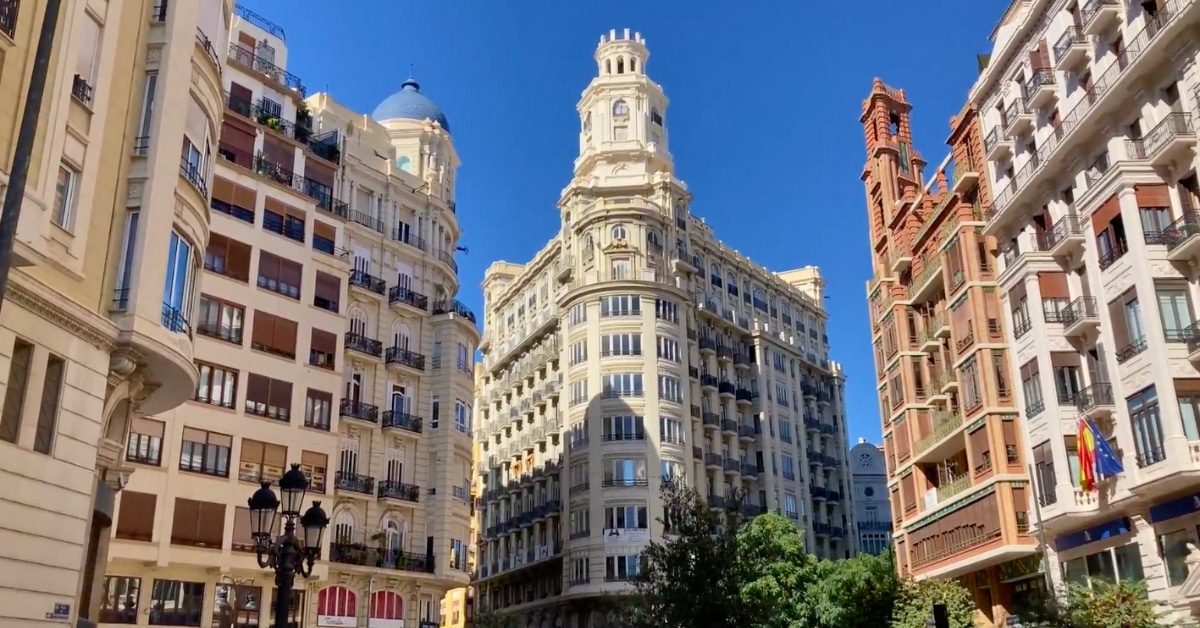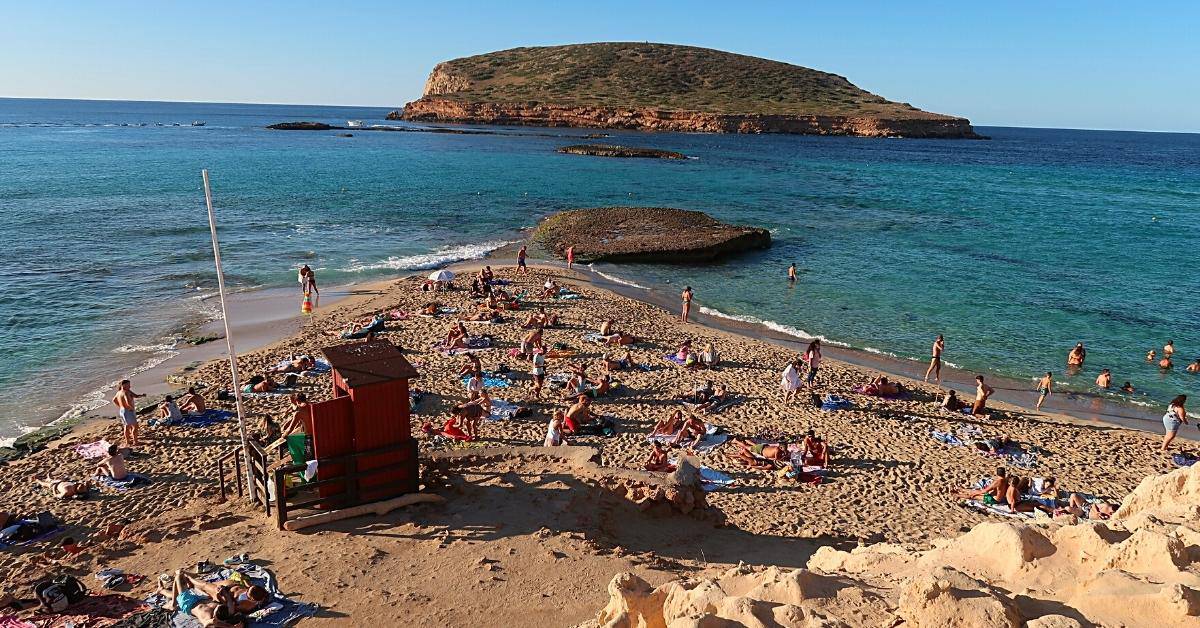SPAIN SOLO TRAVEL GUIDE
KNOW BEFORE YOU GO! SPAIN TRAVEL GUIDE 2024
PLAN AND BOOK YOUR SPAIN SOLO TRAVEL
This page may contain affiliate links for your convenience. For products, the goal is to first provide direct links to eco-friendly, ethical, and sustainable companies, and then to those same type (i.e., Climate Pledge Friendly Certification), of brands that use Amazon, if possible. Therefore, you may see multiple links for one option. Should you make a purchase through any link, I will receive a small commission at no additional cost to you. See my Disclaimers & Disclosures and Privacy Policy for more information.
Like this? Share it with others!
BIENVENIDO A ESPAÑA!

Hi! I’m Gwen, and my passion is using my 28 years of solo global travel and sustainability knowledge and experience to help the solo over 50’s be and stay adventurous through solo travel with their eco-friendly, responsible travel foot forward. Here is my guide to Spain solo travel, all from my solo travel in Spain, so you can book and realize your solo trip to Spain. What are you waiting for?
SPAIN: DID YOU KNOW?
About Spain
Spain – home to 50 UNESCO World Heritage Sites, including Ibiza, the historic cities of Toledo and Salamanca, Doñana National Park, and the works of Antoni Gaudi, such as La Sagrada Familia and Casa Battlo.
Spain is also home to tapas and pinxtos, flamenco dancing, the siesta, fiestas, paella, churros, more vineyards than any other country (it’s the world’s third largest producer of wine),and sangria.

Spain is famous for beautiful beaches, football, bullfighting, La Tomatina (Festivals of Tomatoes), Ibiza, Basque Country, the Pyrenees Mountains, the Running of the Bulls, and, world-class cities, Barcelona and Madrid.
Pablo Picasso, Joan Miró, Salvador Dalí, Antoni Gaudí, El Greco, Diego Velázquez, and Francisco de Goya, to name a few, all hail from Spain.
Languages in Spain
The official language is Spanish (Castilian), and regional languages spoken include Basque (Euskera), Galician-Portuguese, Catalan and Occitan (aranès).
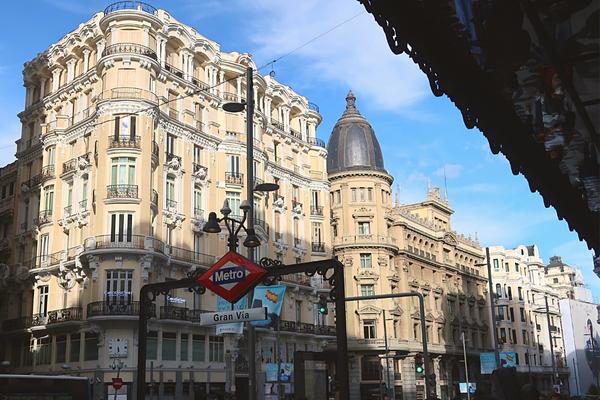
Spanish Culture
Located on the Iberian Peninsula in Southwestern Europe, bordered by Portugal, France, the Mediterranean Sea and North Atlantic Ocean, Spain once held an amazing empire that began when it funded Columbus’ discovery of the Americas in the late 15th century. This lead to the colonization of the now-United States, Mexico, Central and South America and parts of the Caribbean.
The empire began to wane, however, in the 16th and 17th centuries losing command to the seas to England. It underwent financial hardship during the civil war in the 1930’s which resulted in General Francisco (Franco) Bahamonde’s military dictatorship.
Upon Franco’s death in 1975, Spain began to establish a democratic society and modern economy that it still holds today. In 1986, Spain joined the EU and is recognized as a world-leader in freedom and human rights.
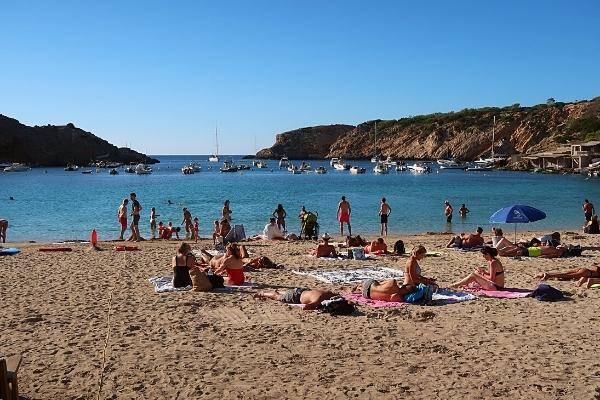
Today, Spain is a homogenous Mediterranean society comprising of Castilian (75%), Catalan (15%) and Galician and Basque regional cultures. Historically, the royal family held the top position in society, but this has changed with the development of a democratic society.
Social standing and upward mobility, however, is measured by achievement in business and cultural areas. The Spanish government is a constitutional monarchy where the King is head of state but the power resides with the democratically elected parliament.
Spain’s education system is regulated by the Ministry of Education, a branch of the government, and comprises of free compulsory education ages 6 to 16 – through both public and private school offerings – with university and vocational education being optional with tuition fees depending on the program or degree.
Spaniards enjoy a universal Spanish National Health care system (SNS) that guarantees free care to all Spanish nationals.

The Spanish are open and friendly and take pride in their community standing and how they are perceived. They are conservative in terms of boasting of oneself or accomplishments. They respect societal positions of status and use a formal greeting by name when addressing or greeting each other.
Greetings can be formal with a handshake but may become more relaxed with a hug and/or kiss through personal familiarity (women kiss each other on the cheek). When invited to a home or event it is recommended to research what gifts to bring.
The Spanish place high value on a strong family structure with social and financial support within the nuclear as well as extended family. Extended families use to reside under one roof, but this is becoming less and less practiced. Additionally, Spanish family sizes have been decreasing with more women entering the university education and holding professions formerly dominated by men.
The Spanish have much religious pride. The majority of Spanish (94%) identify as Roman Catholic with the remaining population comprising of Muslim, Jews and Christians.
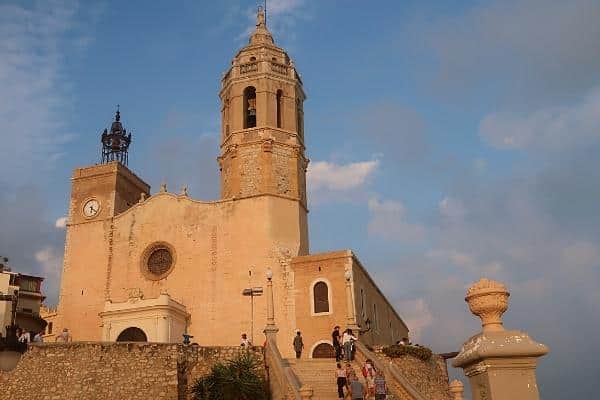
The Spanish enjoy a rich heritage of art, food, architecture, music and dance. Flamenco is known worldwide. Spanish cuisine can vary depending in the region. Paella, the most commonly known Spanish dish, comes from the Valencian region and is a rice dish of different types: rabbit and chicken paella, seafood paella, vegetarian/vegan paella, and mixed paella.
Other traditional Spanish dishes found throughout Spain are patatas bravas (peeled and fried potato bites served with a spicy red sauce); gazpacho (an Andalucian chilled soup of tomato, cucumber, wine vinegar and seasonings); asado de ternasco (an Aragonese dish of roast lamb cooked with garlic, salt and bacon fat); bacalao al pil pil (Basque style cod dish); fabada (an Asturian white-bean stew with chorizo or clams); calamari; Jamón Ibérico (leg of ham); Pulpo a la Gallega (Galician-style boiled octopus with seasonings); chorizo ( spicy and sweet sausage); desserts like Crema Catalana (rich custard topped with caramelized sugar with citrus zest and cinnamon); or snacks like churros con chocolate (fried sticks of dough with powdered sugar served with thick, Spanish hot chocolate).
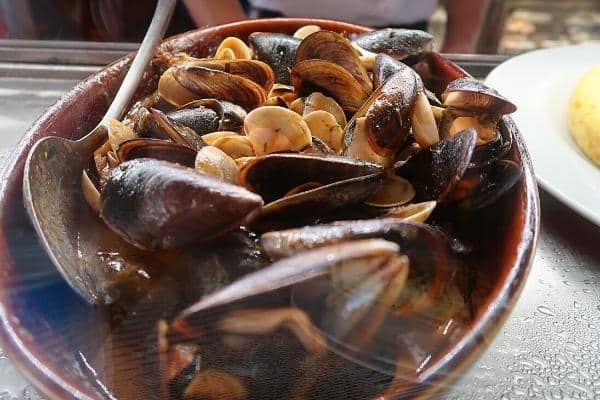
Don’t forget tapas like a Tortilla Española (Spanish omelet made with eggs, onions, potatoes, chorizo, peppers, or ham). Mornings in Spain will see a continental-style breakfast. Midday lunch is a large meal which could contain one or two courses and a dessert at home or five to six courses in a restaurant. Lunch may consist of a soup, salad, and a meat or fish dish with dessert such as fruit or yogurt. Dinner is typically served later, from 8-10pm, and is lighter with one course and a dessert.
In addition to coffee and espresso, tea and the other main beverages, popular drinks in Spain are wine and sangria, of course, Cava (Spanish bubbly), beer, and cocktails like Agua de Valencia.
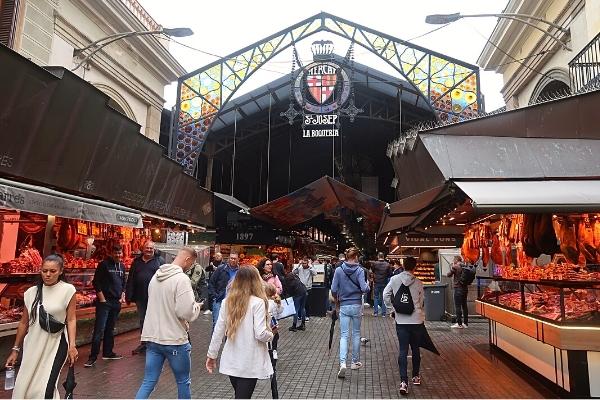
Popular Activities in Spain
Like other European countries, football (soccer) is the most popular sport in Spain so attending professional events is a major past time. Many consider Real Madrid the best soccer club in the world. Also, like other Europeans, the Spanish watch football on TV and participate in football – there are many local teams to be involved with.
With diverse countryside, beaches and bordering a lot of water, the Spanish are able to stay active by enjoying activities like fishing, sailing, windsurfing and kitesurfing, paragliding, water skiing and jet skiing, canoeing and kayaking, rafting, climbing and canyoning, hiking, and cycling.
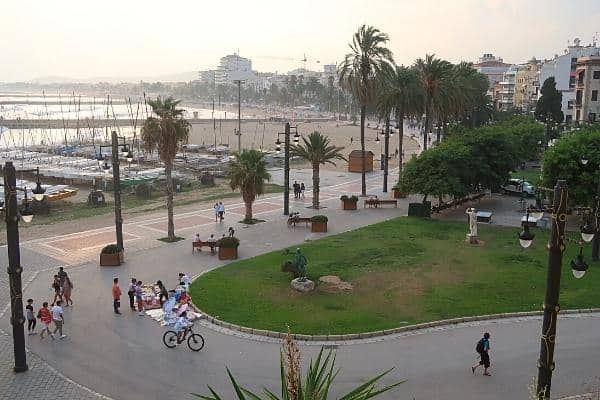
Spaniards like to attend musical events, cinema and go to the many museums Spain has to offer. They enjoy socializing in cafés, dining out, and clubbing. Ibiza, an island in the Mediterranean, is well known for its nightlife and electronic music. Partiers are known to wake in the middle of the day to take part in late night clubbing and “disco sunrises”.
Spanish holidays and traditions can focus around religious or cultural events. Every city or region may have its own festivals. Throughout the country the Spanish celebrate traditional holidays like Christmas, Día de Todos los Santos (All Saints’ Day), and Holy Week, but they can also be seen holding the Las Fallas festival and Tomatina festival in Valencia, the San Fermín festival (including the Running of the Bulls) in Pamplona, and Carnival celebrations in Cadiz and Tenerife.
Best Wine Tasting Tours in Spain
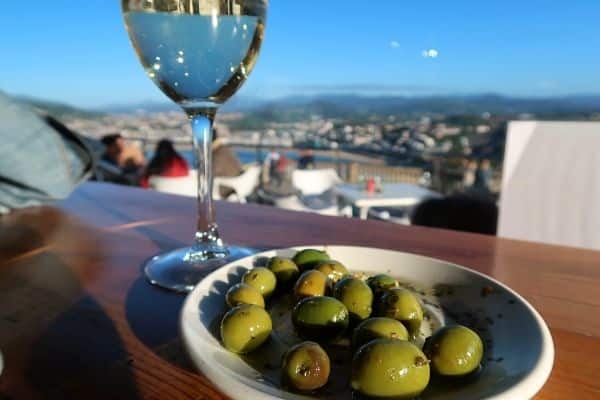
SPAIN TRAVEL PLANNING
Spanish Currency
Spain uses the Euro (€). Exchange rates are usually favorable for Europeans but could fluctuate in the other direction. Check throughout your travel planning phase on any exchange rate changes.
Tipping in Spain
Traveling in a new country is easier when you know the country’s tipping etiquette in advance as each country has its own rules. That said, country rules and norms can shift, so here is an international tipping resource for over 70 countries to use as a general guideline that I have found is constantly updated.
What’s not on there is how to tip a concierge, beauty salons or spas, travel or tour guides, etc. For these extras, it is acceptable to tip 10% at minimum. Remember, tipping is for good service only.
Additionally, you should always tip in the local currency (if tipping in cash), and do not be offended if your tip is refused as it may not be the norm. I feel it’s always better to offer a tip for good service than not, unless I know it will be considered offensive, like in Japan.

Spain Holidays
It’s a complete bummer to spend time and money on the holiday of a lifetime only to show up at a key attraction, or try to access travel or banking resources, only to find them closed due to a national or local holiday.
Therefore, a key activity to do in your early Spain vacation planning stage is to know the local and national holidays in Spain.
SPAIN TRAVEL REQUIREMENTS
Travel Documents for Spain
From the U.S., you will need a valid passport with an expiration date greater than 6 months from your return date to the U.S. It is advised to always check the U.S. State Department in advance of traveling to Spain for pertinent, up-to-date Spain travel advisories and information. If you are not from the U.S., please check your government’s website.
At this time (October 2023), a travel visa is not required for U.S. citizens who travel in Spain 90 days or less and within a 180-day period. However, in mid-2025 it is expected that the European Travel Information and Authorization System (ETAIS) will go into effect that is designed to strengthen European borders and streamline entry. At that time, a printed ETAIS visa waiver (the “ETAIS”) will be required to enter the Schengen Area for tourist, business or transit purposes of 90 days or less. You will be able to apply online for the ETAIS visa waiver, which will also require a fee (7 EUR). Requirements for an ETAIS are available now. Watch for ETAIS updates if you are planning to solo travel to Spain in 2025.
If you are not from the U.S., please check if your country is on the ETAIS list indicating whether you are required to obtain an ETAIS or a Schengen Visa.
Choose from Top Travel Document Holders





Vaccinations for Spain
There are normally no vaccinations required for Spain travel. The U.S. State Department provides up-to-date required vaccination information for traveling to Spain. It is advised to always check for any Spain travel restrictions and required vaccinations during your planning stage and again before you leave.
If you are not from the U.S., please check your government’s website.
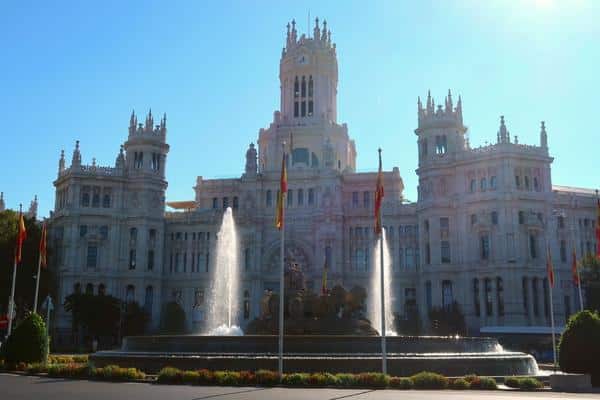
SPAIN TRAVEL ESSENTIALS
Electronics for Spain
Want to use your 110V electronics while traveling around Spain? Spain’s voltage is 230V, and the standard frequency is 50 Hz. If you do not already have electronics (hair dryer, clippers, curling iron, etc.) made for Spain’s voltage, you will need to bring a voltage converter to use your electronics. Below are top-rated power converters for you to compare and buy.
Choose the Converter That’s Right For You





Most smartphones, tablets, laptops, cameras and similar electronics don’t require a converter (double-check your device(s) before you leave home), but you will still need a plug adapter.
Traveling to Spain, Type C and F adapters will fit Spain’s electronic outlets. I recommend bringing at least one of each adapter type accepted. I do not recommend using those single adapters for 100+ countries. They have been known to break and/or cause a power short.
Be prepared before you visit Spain. Bring a solid, reliable, and grounded power adapter to safely charge your electronics in Spain. Below are top-rated U.S. (Type A and B) to Spain power adapter options, from the only brand I travel with, for you to compare and buy.
Choose the Spain Adapter That’s Right for You
Type C Adapters





Type E/F Adapters





If you are going to another country in addition to your trip to Spain, check this international travel adapter guide to make sure you’re prepared.
Cyber Security While Traveling
Having a virtual private network (VPN) service and portable WiFi is always a good idea to not just stay connected, but stay connected securely in your hotel and all public spaces, like airports, train stations, and restaurants.

- Portable WiFi Hotspot for Travel: Experience seamless connectivity with the Solis Lite, your pocket-friendly companion that offers secure and reliable mobile WiFi hotspot coverage in over 135...
- SIMO’s virtual, multi-carrier network, includes all the major carriers, so you can work, learn, or play from anywhere. Stay connected domestically or abroad with your personal Wi-Fi hotspot and...
- Built-in 4700 mAh Power Bank: Stay online all day with 16+ hours of battery life in your Solis Wi-Fi hotspot. Keep all your gadgets charged on-the-go.
- Perfect Case for SIMO Solis Lite 4G LTE WiFi Mobile Hotspot
- Featured Design: Strong compact light weight case, the round square design best matching the round shape of the Solis and making it easy to in and out of the case
- Assured Protection: Semi-hard carrying case protecting the device from shock, shake, scratch. PEVA materials with pressure or hit absorbing and water resistant. The round square design make it best to...
CITY GUIDES & ITINERARIES
Best Things to Do in San Sebastian
Best Day Trips from San Sebastian
Pamplona
Best Things to Do in Pamplona
3 Days in Barcelona Itinerary PDF Instant Download
WITH clickable links for ALL travel devices.
4 Days in Barcelona Itinerary PDF Instant Download
WITH clickable links for ALL travel devices.
Best Things to Do in Barcelona
Best Day Trips from Barcelona
Madrid
Best Things to Do in Madrid
Best Day Trips from Madrid
Valencia
Best Things to Do in Valencia
Beaches
Ibiza
I was recently in Ibiza, but until I write about Ibiza, here are my recommended things to do in Ibiza from what I’ve already enjoyed.
Best Things to Do in Ibiza
HOW TO BOOK SPAIN TRAVEL
It’s important to book the top three travel necessities early: flights, accommodations and ground transportation.
No travel Spain guide would be complete without the booking tools below. These, along with fun Spain things to do and ecotourism ideas, will allow you to realize your solo trip to Spain.
Cheap Flights to Spain
With the ever-growing demand for airline tickets to Spain, flights book quicker these days. Find cheap flights to Spain now.
Don’t Wait to Book Your Flight to Spain
Spain Places to Stay
Second in importance to buying airline tickets to Spain is finding the best place to stay in Spain for your solo in Spain travel. Develop your Spain travel itinerary now and find the best accommodations in Spain to knock one more item off your Spain travel planning list.
Find the Best Solo Travel Spain Accommodations
Getting Around Spain
Spain has Bolt, Uber, Carpoolworld, and other possible regional ridesharing services and apps (research in advance if they are in your destination area).
There are also taxis, of course, and you can easily find a rental car if that better suits your Spain solo travel itinerary.
Find the Best Deals on Spain Rental Cars
Spain is also part of Europe’s incredible bus and train network, so getting around and booking transportation is easy.
Things to Do in Spain
Here are some more of the top things to do in Spain to book for your solo travel in Spain.
Best Spain Food Tours and Activities
SPAIN ECO-TRAVEL IDEAS
There are ways to reduce your eco and carbon footprint through air travel, accommodations, tours, and activities in Spain. To help avoid greenwashing businesses, here are some eco-friendly or sustainable travel (also called responsible travel) tips and resources, you can use to book your travel.
Air Travel Tips
Skyscanner provides a ‘Greener flights’ filter highlighting flights that emit less CO2.
Purchase carbon offsets through your airline or through a third party, like MyClimate.org, Carbonfund.org, or terrapass. Carbon offsetting allows you to buy a certificate to reduce carbon emissions, a major contributor to climate change, which in turn contribute community projects across countries to reduce greenhouse gas (GHG) emissions.
Ground Transportation
The best eco-friendly forms of ground transportation in Spain are public transportation, walking, or renting a bicycle or electric scooter. They are also apt to cost less than other ground transportation.
Explore Spain Bike and Electric Scooter Rentals
Try to avoid renting a car in Spain by using the amazingly convenient and inexpensive buses and/or trains.
When booking a rideshare in Spain, select the Bolt Green or Uber Green options instead of a traditional rideshare, or use Carpoolworld, to support the use of electric cars and carpooling for cleaner transportation in Spain.
Bolt and Lime also have electric scooters to rent in Spain for faster and cleaner commuting. Search Bolt and Lime for select city availability.
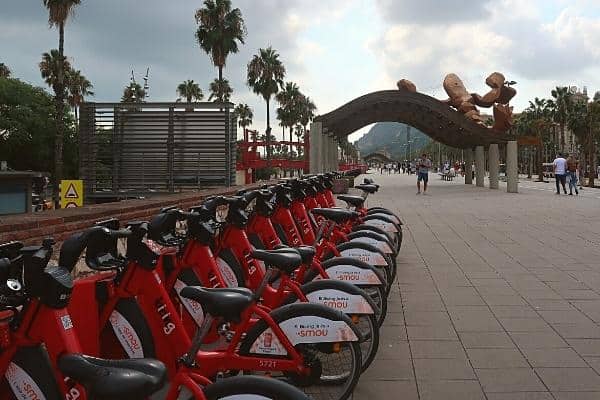
Accommodation Tips
Look for accommodations with the following self and third-party assessed certifications when you book:
Green Globe – Green Globe certifies hotels, resorts, conference centers, transportation, attractions, tour operators, and other tourism businesses globally on sustainable operations and management. Look for Spain and other European Green Global members.
Green Key Global is an internationally recognized environmental certification for the lodging and meetings industries, including hotels and hostels, campsites and holiday parks, restaurants and attractions in 65 countries. Search for Green Key awarded sites.
Living Building Challenge – if you want to stay in a true, sustainable building, find one certified by the Living Building Challenge. LBC’s certification directory shows all project types globally. Hopefully they will put in a filter soon to allow searching by hotels or hospitality type.

LEED Certified – the USGBC’s LEED Certified label on buildings, like many of the Marriott’s hotels, are those that have verifiably employed multiple and varying green building strategies to improve human and environmental health. Search the LEED directory for Spain certifications.
Green Lodging Program – Audubon International has an environmental stewardship certification through third-party verification. Search its certified members directory.
GSTC Certified – the Global Sustainable Tourism Council provides global standards for sustainable travel and tourism, as well as international accreditation for sustainable tourism Certification Bodies. Booking sites that offer GSTC certified sustainable are bookdifferent, EcoHotels, and Transat.
Another way to find an establishments implementing eco-friendly or sustainable practices, certified or not, is through Booking.com in which you’ll need to find and review each establishment’s ‘Sustainable Initiatives’ within the booking process. Starting 2022, however, you’ll be able to filter searches for accommodations with the Travel Sustainable badge.
Find Your Travel Sustainable Stay in Spain
Eco-Friendly Things To Do
Spain has ecotourism ideas available to explore for your next vacation.
Search Green Global and Green Key awarded members for eco-friendly activity providers in Spain. Some may also have the GSTC Certified logo.
Top Eco Friendly Activities in Spain
Eco-Travel Products
There are more ways to do your part for the planet in your responsible travel, like bringing sustainable and eco-friendly products to protect Spain’s environment.
There are more ways to do your part for the planet in your responsible travel. Read my 10 Easy Eco-Travel Tips and view my suggested Eco Travel Resources to learn more.
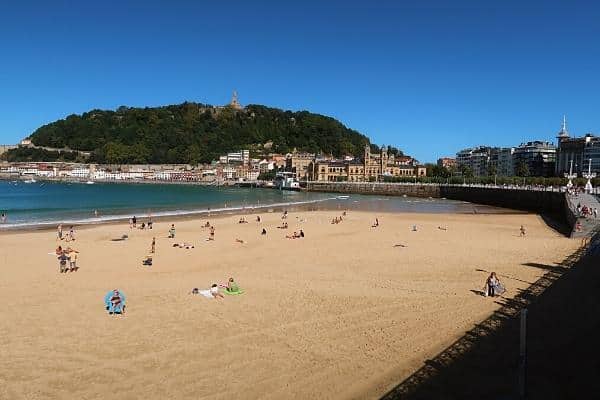
SPAIN TRAVEL SAFETY
Before You Go
Always consult your government’s Spain travel advisory for your Spain travel destination in the beginning travel planning phase and up to your departure date.
Buy Spain travel insurance and international medical insurance for solo in Spain travel to protect yourself and cover for emergencies.
Safety in Spain
Spain is considered a very safe place to visit for any tourist, solo or not. There may be instances of theft or pickpocketing in Madrid, so be careful in tourist areas.
Beyond that, there is nothing I can recall from Spain making it more of a “safety concern” than traveling in my own home country, so my standard tips for solo and female solo travelers in Spain are:
- always carry photo ID with you; if you don’t want your passport on you at all times, at least carry a copy of it.
- always be “street wise”.
- always be aware of your surroundings, especially if you feel the need to imbibe or feel the need to “let loose” – you’re on vacation so have fun!
- never leave your food or drink unattended.
- keep your belongs on your person, or at least in your view in close proximity, at all times.
- be open to meeting and talking with new people – that is where a lot of the travel experience lies – but be careful on how you divulge personal information.
- research places in advance, if possible, so you know what to expect (i.e., “have a familiar view” – I like to Google the street view of new addresses I’m going to first).
- if something, someone or someplace makes you feel uncomfortable, go with your gut – leave.
Fire Season Travel Tips
SPAIN BUDGET TRAVEL TIPS
Best Time to Visit Spain
Like Portugal, Spain’s high, tourist season, and most expensive time, is the summer (late June to August). The weather is hot and the beaches are crowded. Crowds are not as heavy, however, March to May or late September to October. The weather is still nice in these months as well.
The least expensive time to go to Spain would be November to February. For overall best weather and prices, try booking well in advance for spring or autumn.
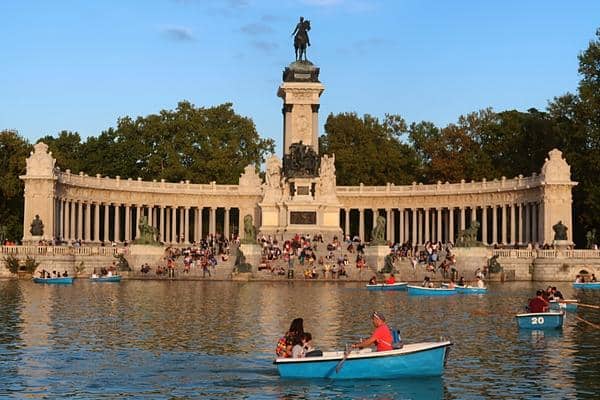
Budget Accommodations
Staying in hostels could save you a lot of money on accommodations in Spain, especially if you stay in a dorm-style room. Save more money by booking well in advance.
Many Spain hostels also offer private rooms, which I choose from time to time. Private rooms in hostels could possibly be cheaper than hotels in Spain – it depends on where you stay and how far in advance you reserve.
Don’t overlook exploring hostels in Spain if you’re on a budget.
Reserve Your Spain Hostel
Best Time to Book Travel
Ready to book your Spain solo travel? The sooner you book your reservations, the more you’re likely to save money and get the best flight, accommodation, and rental car choices and deals.
Don’t miss out and find the best Spain flight deals. The best time to book travel is now. Bundling flight, hotel and/or transportation reservations may even save you more money on your trip to Spain.
Book Spain Travel Early to Save Money
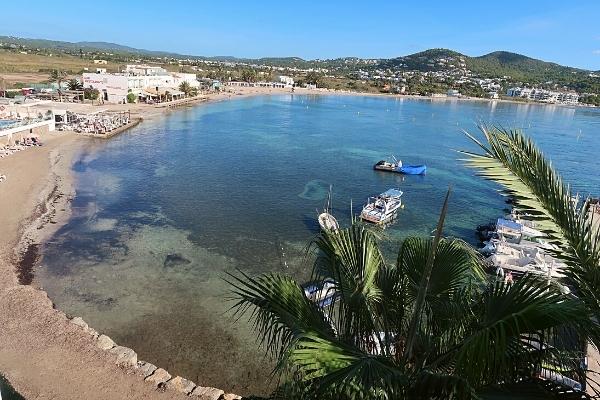
PERSONAL STORY
Spain was one of the seven countries I revisited in 2021 (after many decades). I went back to Barcelona, full of wonder architecture, colorful people, and a fabulous beach where you can get great sangria and paella. I also went back to Madrid, a lovely city, which holds two of my favorite pieces of art – La Guernica and La Muchacha en la Ventana – housed in the Museo Reina Sofía.
I was also fortunate to visit San Sebastian, Pamplona, Sitges, Ibiza, and Valencia. I will have a lot of info on these places to share soon.
Spain is fully of amazing coastal cities, they make me want to move to Spain. Hmmm…what an idea.

